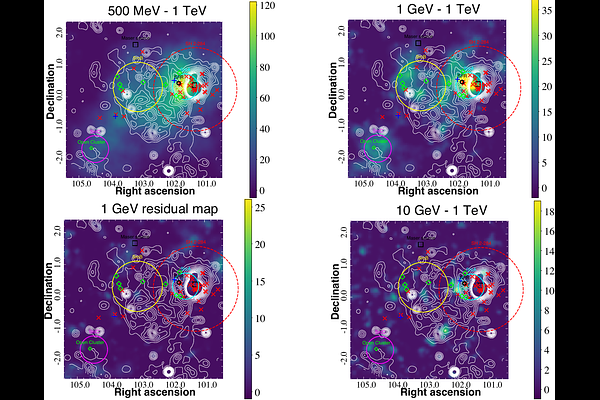Discovery of diffuse $γ$-ray emission in the vicinity of G213.0-0.6: Supernova remnant versus massive star-forming region

Discovery of diffuse $γ$-ray emission in the vicinity of G213.0-0.6: Supernova remnant versus massive star-forming region
Yuan Li, Gwenael Giacinti, Siming Liu
AbstractWe report the discovery of high-energy $\gamma$-ray emission in the vicinity of G213.0-0.6, which is debated as a supernova remnant (SNR) or an ionized hydrogen (H$_{\rm{II}}$) region. Using 16-yr Pass 8 data from Fermi Large Area Telescope (Fermi-LAT), we found three extended sources with different photon spectra in this region, which will label as SrcA, SrcB and SrcC. Among them, the $\gamma$-ray source SrcA with a log-parabola spectrum is spatially coincident with a star-forming region and several OB stars. The power-law spectra source SrcB is spatially coincident with a SNR radio shell. SrcC with a harder power-law photon spectrum is located outside of the radio shell structure. All of them are spatially coincident with a dense molecular cloud (MC) in the velocity range of 35 - 54 km s$^{-1}$. In this scenario, SrcB can be interpreted as the GeV counterpart of the SNR, and its $\gamma$-ray emission originates from the shock-cloud interaction. SrcA and SrcC originate from the escaped CRs illuminating nearby MC. For SrcA, another possibility is that the $\gamma$-ray emission originates from a young stellar cluster (YSC) associated with a star-forming region (SFR), however, the supporting evidence remains insufficient to draw a definitive conclusion.